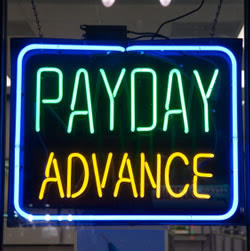Party is over for Pakistan's Economy
The eight years of the previous government brought an economic boom in Pakistan. Between 2004 and 2008, real GDP grew at an average of 7%. There were plenty of employment opportunities. Salaries in blue collar jobs reached levels never seen before. Stock Market made record-breaking gains. Privatization proceeds, foreign direct investment, increased remittances and international aid increased foreign exchange reserves to more than $16 billion by 2007. Two sectors, Telecom and Finance, specifically achieved phenomenal growth. Deregulation in the telecom sector played a vital role in turning around the scenario in this industry. Most of the growth could be attributed to the cellular sector. There was significant foreign direct investment. Network coverage spread to around 90% of Pakistan. The growth rate was 100% between 2004 and 2008 with the number of subscribers reaching around 80 million. Companies improved the quality of service, decreased rates and expanded coverage. This, in addition to the availability of cheap handsets, enabled people from less privileged classes of society to have access to such services. As of today 5 major cellular companies are in operation: Mobilink, Ufone, Telenor, Warid and Zong. Fixed line telephone sector, however, experienced much less growth with consumers reaching just 4.8 million by 2007. Wireless local loop subscribers reached 2 million by the end of 2007. There was growth in Internet subscriptions as well, however this service remained out of the reach of less income groups that contributed to the digital divide. Banking sector performed very well. Privatization played an important role. State Bank requirements also encouraged existing banks to increase their branch network significantly. Assets of all banks showed a net expansion of Rs. 4,351 billion by 2007. By 2008, 80% of banking assets were controlled by the private sector. A number of Middle Eastern and European Banks started operations in the country including Barclays, RBS (ABN Amro takeover), Dubai Islamic Bank, Emirates Global Bank and others. A number of local groups established banks, mostly in collaborations with foreign partners. Credit became widely available to businesses and individuals. An ever-increasing number of people obtained leased cars, home loans, personal loans and credit cards. The number sold of electronic and electric devices sky-rocketed. The non-banking financial sector achieved great success as well. For instance, the net assets of mutual funds increased from Rs. 25 billion in FY 2000 to Rs. 313 billion in FY 2007. Pakistan’s stock market was the fastest growing market in the world between 2000 and 2008. It received enormous foreign investment in addition to the active contributions by local investors. The Karachi Stock Market (KSE 100 Index) grew from 1,521 points in June 2000 to more than 15,000 points by mid 2008. There was growth in other sectors too. Power sector was one such sector. Construction and Real Estate markets showed vast improvements. Foreign companies like Emaar and Al Ghurair Giga invested heavily in Pakistan. Projects such as Centaurus, Platinum Square, Gold Crest and Giga Towers were announced. Immense investments went into new property and housing schemes. Hotel industry finally began to see light at the end of the tunnel as projects such as Jumeirah in Islamabad, Sofitel in Karachi and Hayat Regency in Lahore were announced. Retail sector also performed well. Malls, super markets and departmental stores sprang in different parts of the country. Foreign stores like Metro, Makro and Carrefour announced their entry. Advertising industry achieved tremendous growth as well in Print, Television, Radio, Outdoor and Internet media. The situation started to change swiftly as the caretaker government took charge. Rise in oil and food prices at international level, falling currency, slippages in budget, failure to pass on the increased oil price to the consumer, heavy government borrowing from State Bank, mismanagement of wheat crisis and corruption had badly hurt the economy. Recent growth in Pakistan seemed to have been consumption oriented. Agricultural and Industrial sectors were neglected. Trade and current account deficits deteriorated. By April 2008, overall inflation rose to 17.2 percent. The previous government could not match the rise in number of vehicles, sold, to road infrastructure improvements which lead to traffic congestion problems. It did not produce more electricity to take care of the growing energy needs. Shortage of electricity, oil, gas and food posed serious problems for the economy. Although, availability of credit helped people improve their lifestyles, many blamed the banks for charging exorbitant interest rates, while others felt that the old concept of “living within one’s own means” was violated by spread of easy credit. Global financial crisis had its impact felt on Pakistan since exports fell and budget cuts were implemented by multinationals operating in the country. Companies tightened their budgets for existing projects and cancelled those for new ones. The once booming employment market started to take a hit. Stock market faced the worst crash as foreign investment was withdrawn. GDP growth came down to 5.8% in FY 2007-2008, as opposed to the average of 7% in the past few years. In November 2008, Pakistan announced it would receive a loan of $7.6 billion from IMF as foreign exchange reserves had fallen to very low levels and balance of payments had become extremely worse. The policies of the present government will determine how well Pakistan recovers from the current situation. Deteriorating relations with India and adverse law and order situation will be major challenges in addition to a host of other problems for the present regime in recovering the country out of the present economic crisis, if indeed the government has the ability to achieve this goal.
![[random_pakistan-economy.png]](https://blogger.googleusercontent.com/img/b/R29vZ2xl/AVvXsEgfiYuoa3PRDs0RNc9lJCxzZN103vY70adopetBtwatwrNDXnA8FKNSAjdi7j1FKJIz-P12YekuhyfIZ8AUuTXavNUAi3_rHOuut5ZxyPgG8EWkQy1RJqnF_Keufjmj1WSqm5XiOFOwZ8c/s1600/random_pakistan-economy.png)


